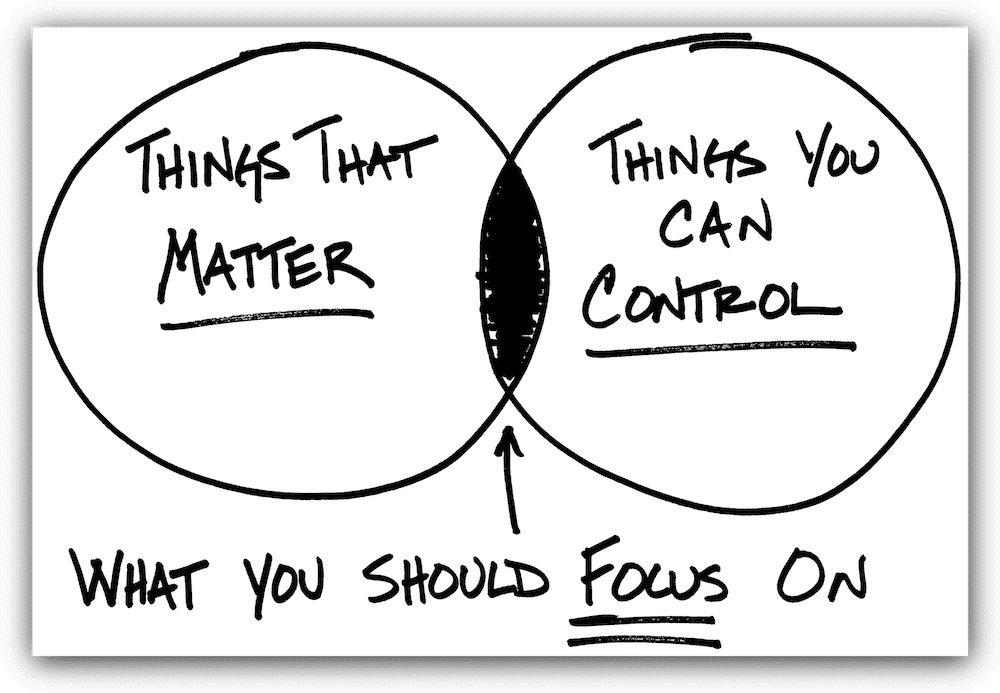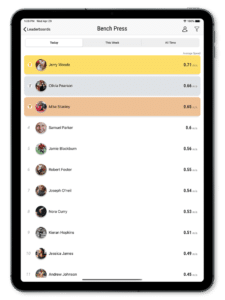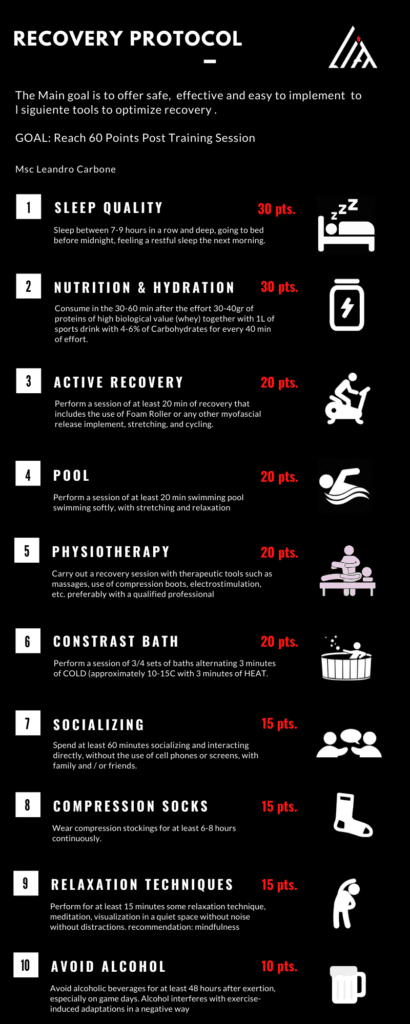5 de August de 2020
5 Things You Can implement To Improved Your Training Environment
Either if you are a personal trainer dealing with a bunch of clients, the head of performance of a team or leading the strength and conditioning department of a training facility, setting up high working standards is what will differentiate success from failure.
Building a fluid working environment, where thing runs smoothly, can save us a lot of time, energy and money. But it’s not an easy task and it usually requires investing …. time, energy and money of course. if you are working on the strength and conditioning field, chances are you´ve never received proper education on finances, human resources, marketing or business and if you are lucky enough, you will learn those topics from you own experience while making mistakes without going bankruptcy or burnout.
We, as coaches, are dealing with an overflow of information, every day a new method, system, gadget or coaching strategy is out there for us to scrutiny. It feels like we just can’t catch up en sometimes we end up wasting our precious time and energy differentiating useful strategies from hype.
So, we will try to discuss 4 topics which can help out coaches to improve their training environments, transforming your work in a time-efficient machine and making your athletes/clients more willing to train and give a plus in every session.
Embrace Technology
Technology can be either an enemy or a powerful ally. Nowadays, there is a massive amount of devices available for tracking different performance and health-related variables and selecting one can be a difficult task.
However, buying something because it looks awesome or because you´ve seen it on social media will for sure end up frustrating you and emptying your pockets.
This post does not pretend to be a user’s guide for buying sports gadgets but I´ve learned for my mistakes and sharing my experiences might help someone out. First of all, it’s key to have a budget, not having one it’s like going to the supermarket in the middle of 36 hours fasting. Ones you set up a money limit you narrow the search and it´s time to start asking the right questions.
1) Which variable I’m trying to assess?
This question might look stupid, but sometimes we miss the whole point and end up buying stuff that is neither useful nor practical. For example, if we want to assess jumping height we can buy a contact mat or a force plate. The first option is, of course, much cheaper. But let’s assume the cost is exactly the same. Force plates are the state of the art equipment for testing and assessing kinetic and kinematic variables. However, analyzing and interpreting the data requires advance knowledge in sports science, especially biomechanics. Also, the amount of data delivered by force plate can be overwhelming and if we only want to assess jumping height it may be too much. On the other hand validity and reliability are both crucial aspects of sports technology. Tracking barbell speed for prescribing, assessing and monitoring strength training programs (VBT) can be implemented with the help of different devices. The most popular ones are linear position transducers (such as Vitruve) and accelerometers. Despite both being valid LPT appears to be a more reliable technology1.
2) Can I easily incorporate this gadget to my sessions?
This is a tricky question and is entirely based on my personal experience. One of the first investments in sports performance gadget I’ve ever made was an LPT about 10 years ago. A robust and complex piece of equipment, powerful enough to collect and show 1000 data point per second in real-time, calculating displacement, velocity, acceleration, force and power curves. But the con was it was designed for lab use only. Every time I wanted to use it in a training environment I ended up wasting a lot of time setting it up. it was not 100% portable since it’s not a wireless device and because of the crazy amount of data that can be collected, analyzing it was really time-consuming.
So, once the answers are clear enough, then go for it!. Technology will help you design and implement testing procedures, collect valuable data and improve your training programmes, Also, it will grow the engagement with your clients/athletes and give you an edge with your competition2.
Focus on 2 things!
One of the biggest mistakes I´ve learned from in the past is not wasting time in things that I cannot control or that does not matter at all. Usually, coaches focus on details that just are not that important. There probably be no differences between doing 5 reps with 80% or with 78% of 1RM. Unless you are doing biopsies, it doesn’t matter if HIIT number 1 increases mitochondrial volume more than HIIT number 2. If you have a force plate, does not mean that you must track every single variable that the software allows.
Two easy questions should guide you through the process. Does this really matters? Can I Control it?. During the last couple of years, I kind of became obsessed with circadian rhythms physiology. It’s a really interesting topic with implications in every single aspect of human biology. No one could argue that it is important and biological rhythms does not have any implication. But what we, as coaches, are able to control is very very limited. We cannot spend 24/7 with every one of our athletes, not even with a single one of them. So, chances are we cannot control if their sleeping routine is bulletproof enough. However, we can track sleep quality with different metrics (even questionnaires can do the trick) and provide feedback to improve their rest if it is needed.
 Figure 1
Figure 1
So, stop wasting time and energy in thing either irrelevant or that are out of your reach. Sometimes it’s better to step back and change the approach to then move forward with a better perspective.
Set Up a Competitive environment
Athletes…. No!, Humans are competitive animals. Research has consistently shown that competing against your peers push you to give a plus3–6. Incorporating competition during training sessions can be a powerful motivator and help you retain clients. Also, if you work with athletes, it can be the difference between a good and a great training stimulus.
Some Ideas:
1) Using VBT: As we already covered in previous posts using VBT can be a powerful tool to make athletes compete and improve training sessions, especially when lifting max weight is not the goal. Setting up target velocities or power outputs as well as fixed weights and measure how fast athletes are able to lift it are both ways to make a group of athletes compete against each other2. Remember to use relative values (for example weights should be expressed in kg per body weight).
2) Leaderboards and Gamification: Using leaderboards, badges and any other gamification too could be powerful tools. The key here is selecting diverse metrics in order to give everyone a chance to compete in some area. If you only measure strength metrics you will probably end up with 5 or fewer athletes competing and the rest watching how their mates ripped their eyes off for a place in the podium. So, collecting pure strength metrics, such as 1RM, as well as explosiveness metrics (jumps, throws), endurance metrics (reps for time) or whatever you want to track, will widen up your athlete’s chances of winning in some area7–9.
Research has consistently shown that competing against your peers push you to give a plus
 Leaderboard from Vitruve TEAMS
Leaderboard from Vitruve TEAMS
3) Punishments: Rewarding an athlete for the desired behaviour is a great motivation strategy. But sometimes punishment can be as effective if not more. In my experience, both athletes and non-athletes, especially non-professionals, sometimes struggle to commit at the desired level and if you are dealing with a team or group of clients/athletes is not fair treating everyone the same. Personally, I had some issues with athletes not completing wellness questionnaires and forms and designing some award motivating tool was not going to be useful. So, I´ve implemented punishments for the ones with blank values. After less than a month 60 or more amateur rugby players were completing every session RPE on time as well as a daily wellness questionnaire10.
Individualization vs Generalization
Individualized training programmes can be a double-edged sword. Going too general would not be enough for some athletes and maybe too much for others but is much more time-efficient. On the other hand, being too specific with every single one would provide a much better stimulus but the time spent on every athlete might drain your energy.
Moreover, some components of a training programme can be addressed more generally than others. Also, building a solid progression or even better a constraint model approach would probably be targeting the sweet spot between the 2 worlds.
1) Warm-up, Mobility and “Corrective” Drills: There is no question that a good movement screening assessment can provide valuable information to be then used to design specific drills. However, it could be a wise approach to “pre” design different progressions divides by target areas. For Example, making 3 progressive levels of 2-3 ankle mobility, shoulder mobility or whatever part of the body you want to address, exercises could save you a lot of time. Additionally, making a couple of full warm-up protocols could be a great approach to avoid monotony.
3) Cool Down: As a coach, time is priceless, so why wasting those 5-15 minutes improvising pointless cooldowns that would probably end up with an athlete checking on social media ?. Instead, having 2-3 steps cool down could increase athlete commitment. Also, incorporating different recovery strategies could help to improve the whole training programme.
 Figure 2 Recovery protocol implemented with a Rugby Team.
Figure 2 Recovery protocol implemented with a Rugby Team.
4) Plyometrics: This is going to be controversial, I know. But, every athlete in the world should be doing some kind of plyometrics training (jumps, throws, hops, etc). Especially during GPP and off-season, Plyo exercises are usually really general going from extensive to intensive, from low impact to high impact, from low velocity to high velocity. So, why not have a couple of progression pre-made and divided into phases in order to same time and provide a proper stimulus.
Skin in the game
I’m a big fan of Nassim Taleb books and way of seeing life. One of his mantras is “skin in the game”, and the deep meaning of the quote is that you must take risks if you want something in return and the ones who get some benefit without skin in the game, is implicitly translating that risk to someone else, which is morally unacceptable.
So, how this could help us improve our training environment?. Well, you as a group leader, must be committed to a higher level. Your decisions must have some consequences if they are wrong. And even though in real life, chances are, you are effectively taking risks in every decision you made, what will put you in a leadership position with your athletes/clients is showing them that every single thing that harms them also harms you.
Imagine you are a financial advisor and you convinced your clients to invest in a fund but at the same time, you are investing in another fund. Even there is no conflict of interest at all, you don’t have skin in the game. Thus, your clients would probably have more than second thought on giving their money to you.
Now, some degree of skin in the game is implicit. If you coach x amount of athletes and they start getting injured, your job would probably be “harm”. However, my point here is we must commit somehow at least at the same level as our athletes/clients do and always have the “skin in the game” concept in mind before making any decisions.
There are plenty of ways of implementing this. For example, I know a coach who charges his clients not only monthly but also for objectives. If his athlete/client reaches a goal, he got a “bonus”. Another way of having skin in the game could be letting your athletes/clients implement punishments for your behaviour. So, being late, touching your cell phone or any other rule they would come up with, breaking them will have negative consequences.
Bibliography
- Pérez-Castilla, A., Piepoli, A., Delgado-García, G., Garrido-Blanca, G. & García-Ramos, A. Reliability and Concurrent Validity of Seven Commercially Available Devices for the Assessment of Movement Velocity at Different Intensities During the Bench Press. Journal of Strength and Conditioning Research 33, 1258–1265 (2019).
- Nagata, A., Doma, K., Yamashita, D., Hasegawa, H. & Mori, S. The Effect of Augmented Feedback Type and Frequency on Velocity-Based Training-Induced Adaptation and Retention. Journal of Strength and Conditioning Research 1 (2018). doi:10.1519/jsc.0000000000002514
- RHEA, M. R., LANDERS, D. M., ALVAR, B. A. & ARENT, S. M. The Effects of Competition and the Presence of an Audience on Weight Lifting Performance. Journal of Strength and Conditioning Research 17, 303–306 (2003).
- Konings, M. J. & Hettinga, F. J. The Impact of Different Competitive Environments on Pacing and Performance. International Journal of Sports Physiology and Performance 13, 701–708 (2018).
- DiMenichi, B. C. & Tricomi, E. The power of competition: Effects of social motivation on attention, sustained physical effort, and learning. Frontiers in Psychology 6, (2015).
- Rhea, M. R., Landers, D. M., Alvar, B. A. & Arent, S. M. The Effects of Competition and the Presence of an Audience on Weight Lifting Performance. The Journal of Strength and Conditioning Research 17, 303 (2003).
- Blohm, I. & Leimeister, J. M. Gamification. Business & Information Systems Engineering 5, 275–278 (2013).
- Koivisto, J. & Hamari, J. The rise of motivational information systems: A review of gamification research. International Journal of Information Management 45, 191–210 (2019).
- Höllig, C. E., Tumasjan, A. & Welpe, I. M. Individualizing gamified systems: The role of trait competitiveness and leaderboard design. Journal of Business Research 106, 288–303 (2020).
- Essentials of Strength Training and Conditioning, 4th Edition. Medicine & Science in Sports & Exercise 48, 2073 (2016).

